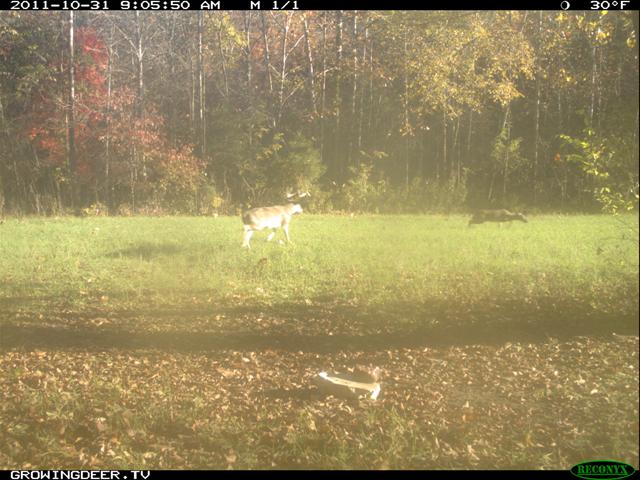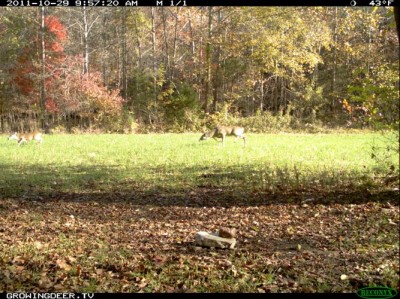The Chase Phase of the Rut
Filed under: Deer Hunting, Hunting Blog, White-tailed Deer
Mature bucks are beginning to chase does throughout much of the whitetail’s range. It’s a time of year that literally millions of deer hunters schedule their vacation and with good reason.

A big, mature buck chases a doe
If you hunt close to home, you can pick days to hunt when a weather front is passing, or you’ve found a limited resource such as a pond during drought that deer are actively using. However, if you are traveling to hunt then the chase phase allows you to plan a year in advance and puts the odds in your favor that mature bucks will be active during daylight hours. During the chase phase of the rut mature bucks tend to be active during the daytime even if the hunting pressure or air temperatures are a bit higher than normal.
The October Lull phase of deer activity just passed. This is when deer, especially mature bucks, have grown their winter coat and food is usually plentiful. Deer don’t have to travel far to find food, and they aren’t burning many calories to stay warm or chase does. Mature bucks simply don’t have many reasons to move during daylight in mid-October in most regions.
However, with each passing day now more and more does will become receptive. Bucks will be moving in search of the few does that are receptive. For the next several days, more and more does will become receptive until the peak of breeding activity. During the peak of breeding activity, most mature bucks will stay with a receptive doe for about 24 hours. This is called the Lock Down phase of the rut. During this time, mature bucks typically only move when they are finished tending one receptive doe and are seeking another.
The woods can seem almost void of deer during the Lock Down phase. This is because it’s not only the mature bucks that tend does. In fact, multiple research projects have now shown that mature bucks only breed slightly more does annually than immature bucks. Not many deer will be moving when most of the does are receptive and most of the bucks can have a date.
In addition, the duration and intensity of each phase of the rut varies location by location based on the herd’s adult sex ratio and health. Herds with a balanced (or skewed toward bucks) adult sex ratio seem to have the most intensive rutting behavior. There’s much more to the science than what I’ve shared here.

A Buck Chasing A Doe During The Chase Phase of the Rut
So, if you enjoy hunting the chase phase of the rut, get out the door! It’s time to go hunting! If you choose to plan ahead for your hunting vacation next year, the first and second week of November is usually a good option for hunting mature bucks in most areas of the whitetail’s range. There are other times of the year that can be very productive, but they are very weather dependent. The local weather can’t be predicted accurately enough to plan vacation time months ahead. However, weather isn’t as big of a factor during the chase phase of the rut, so it’s the safest bet for scheduling hunts that require packing a suitcase!
Growing Deer together,
Grant



